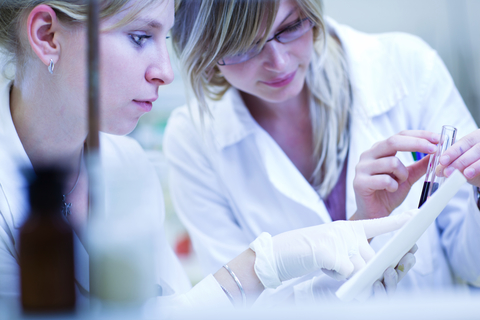Artificial lungs light enough to be carried in a backpack

An artificial lung that’s small enough to be carried in a backpack has been shown to work in sheep (New Scientist, 2017). It’s one of several devices being developed that could transform the lives of people with lung failure, who are currently dependent on large machines. The new device still requires an oxygen tank to be wheeled around, although tank-free prototypes are also being tested.
People with lung failure are usually connected to a machine that pumps their blood through a gas exchanger to provide oxygen and remove carbon dioxide, but this often confines them to bed. The longer they are bedridden, the weaker their muscles become and the less likely they are to recover. To avoid this vicious circle, those who are well enough may be helped to walk around the hospital, but this is difficult because the machines are bulky with lots of long tubes. Interest in better options grew after the 2009 swine flu outbreak, when many patients ended up on this kind of support.
Artificial lungs could provide a stopgap for people recovering from severe lung infections or waiting for a lung transplant – although a transplant would still be a better long-term solution for those with permanent lung damage. However making artificial lungs has proven harder than making, for example, a mechanical heart.
William Federspiel of the University of Pittsburgh said “The heart is just a pump” whereas the lungs contain a fabulously convoluted network of branching air sacs to allow gases to diffuse in and out of the blood. He said “The lungs have a tremendous capability for gas exchange and there’s no man-made technology that can come close for efficiency.”
The challenge is further complicated by the fact that some lung failure patients also have weakened hearts, and may need help pumping the blood into the artificial organs.
William Federspiel’s team has developed an artificial lung that combines the pump and gas exchanger into one device that’s small and light enough to be carried in a backpack, making walking easier. The device would be connected to the patient’s neck, requiring just a short tube. William Federspiel said “We want very little tubing that runs outside the body.”This month, he published the results of experiments in four sheep, showing that the device could fully oxygenate the animal’s blood for a six hour test period, although he says they have since demonstrated that it works for five days.
Another kind of artificial lung is under development at Carnegie Mellon University in Pittsburgh. It is aimed at patients whose hearts are working well enough to pump the blood through the gas exchanger, and connects to the heart’s arteries, with tubing coming out through the chest and the gas exchange device strapped to the patient’s body. Work due to be published later this year showed it kept three out of four sheep alive for two weeks. Keith Cook of Carnegie Mellon University, who was involved in the work, said the experiment had to be stopped in one sheep because it developed a slow heartbeat, which wasn’t caused by the device.
Both this device, and the artificial lung developed by William Federspiel, require an oxygen supply, so any human patient would still have to wheel around an oxygen tank, but they would be far more mobile than they are currently. However, a more efficient device is in the works that runs off the air in a room, so no cylinder is required. This runs blood through extremely thin channels formed by polymer membranes, providing a larger area for gas exchange.
A miniature version has been found to work in tests on rats. Joseph Potkay of the US Department of Veterans Affairs said another benefit of the ultra thin tubes, just 20 micrometres in diameter, is that they mimic the pressures on blood cells exerted by the tiny capillaries of the natural lungs, helping to keep them healthier.








